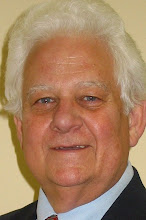
Put Your Customers At Ease
The in-take process is a valuable phase in the overall sales process. It’s an opportunity to gather critical client data for database storage. It’s also your opportunity to get to know the customer, his or her preferences, lifestyle, wants and needs. In fact, learning more about the customer’s preferences is the most important part of the in-take process.
But first, how to complete a useful in-take form.
Qualify Store Visitors
The last thing people want is for someone to pounce on them when they walk through the door. Especially one who starts asking a lot of personal questions. This, of course, is based on the false assumption by the salesperson that every store visitor is a prospect. Not so.
Some visitors are simply looking for batteries. Some need a little cleaning and tweaking. And some are taking those first tentative steps toward a better quality of life through hearing technology.
So, before I ask a single personal question, I greet the store visitor and determine how I can best serve them. If they’re browsers, I let them browse and also let them know I’m available to answer any questions. Browse away.
On the other hand, if the visitor is a referral from an audiologist, or tells me that they’ve noticed hearing loss and want to address it, I take a different tact. These are visitors who are looking for hearing solutions.
Time to go to work.
Discuss Options
Again, I have yet to ask a single personal question. Instead, I educate the visitor. I talk about hearing evaluations and display the different styles, colors and options the visitor has. I want o make sure that the visitor trusts me and I work hard to build that trust. At this stage, I’m an educator so I display a number of styles, brands and price points to give the store visitor a range.
At that stage I ask the visitor if s/he’d be interested in a hearing evaluation. If the answer is no, I let them know that I’m prepared to answer questions and provide guidance as needed.
However, if the visitor expresses interest in a hearing evaluation, I begin the in-take process. Only now is it proper to start gathering information.
The In-Take Process
As I’ve mentioned in previous posts, I keep a comfortable seating area in my retail outlets – a place to sit, have a cup of tea and start gathering information. Privacy is often a concern, so I keep this seating area to one side of the store for the comfort and security of the visitor who has been converted to a new customer.
You should have a standard in-take form, but keep it short. Visitors who are grilled for 30 minutes get tired of answering question after question.
So, my in-take form includes:
Name
Full address
Home and cell phone numbers
Email address
Referring audiologist (if applicable)
Short medical history including current medical conditions
Notes
My in-take form includes a lot of white space so I can add notes during the in-take process. Avoid self-serving questions like: How did you hear about us? Or Do you have a budget in mind? You can glean the answers to these questions once the in-take process is complete.
Using In-Take Data
All in-take data should be entered in to your store’s client d-base. This is your Golden List – people with whom you’ve conducted business and built friendships.
Direct mail pieces should be sent immediately after a store visit to thank the visitor for stopping by. This can be followed up with announcements of special events, sales and other news of interest to prospects or existing customers.
And again, collect those e-mail addresses. They’re invaluable for maintaining contact with your client base. Use e-mail auto-responders to provide information in the form of a newsletter. This keeps your business’ name in front of existing customers.
I also find that by offering special events or sales, lifetime after-care or in-store hearing evaluations to existing clients I build a family. These people come to my store to see me to swap out a battery or re-tune if needed.
And I’m always glad to oblige. These satisfied buyers are your best salespeople. They’ll tell their friends about the quality and professionalism, the caring and interest found in your store.
And this word of mouth (WOM) advertising is the BEST advertising an independent hearing specialist can ever have.
Go for it.
To learn more about how to improve your service and increase sales, visit Hearing Tutor for the latest in marketing advice AND low-cost, license-free marketing materials.
John M. Adams III
jma3@jmadamsvt.com


















No comments:
Post a Comment